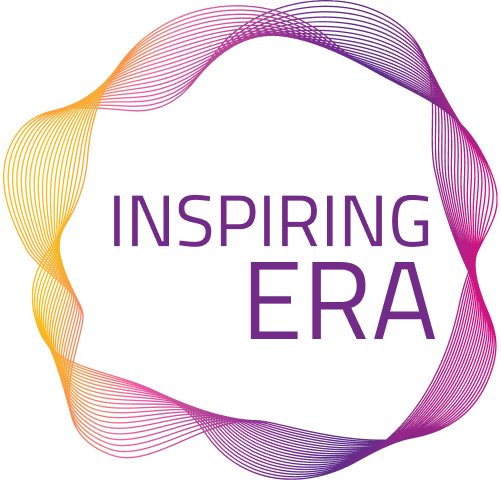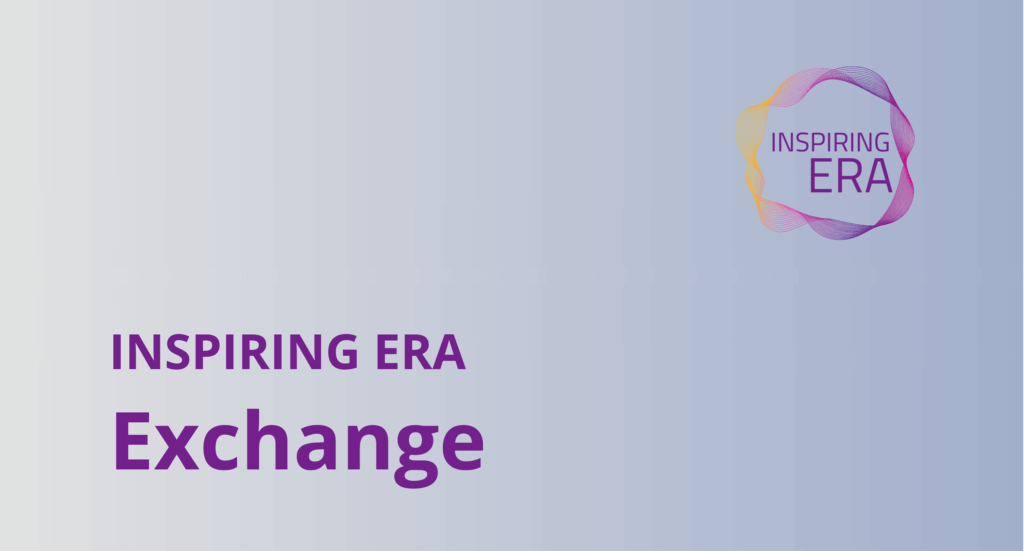Equality Monitoring Frameworks at National and EU Levels: Sharing Insights and Experience: Insights from the INSPIRING ERA Exchange
As Europe strengthens its commitment to equality and inclusiveness in research and innovation, a central question has emerged: how can progress be effectively measured?
This question guided the INSPIRING ERA Exchange on Equality Monitoring Frameworks at National and EU Levels, held online on 29 October 2025, bringing together over 80 participants from EU institutions, national ministries, universities, equality bodies, and research organisations.
Co-organised by INSPIRING ERA, the European Commission (DG RTD – Gender Sector), and the Danish Presidency representative, the event explored how equality monitoring systems can evolve to reflect Europe’s growing ambitions under the ERA Policy Agenda 2025–2027 — from inclusive Gender Equality Plans (GEPs) and intersectionality to gender budgeting and the prevention of gender-based violence.
Setting the Scene: From Commitments to Accountability
Opening the session, Hana Tenglerová (DG RTD – Gender Sector) placed the discussion in the context of the new ERA Policy Agenda, which puts implementation, monitoring, and evaluation at the heart of gender equality policy. She highlighted four priorities for the years ahead:
“Inclusive GEPs, integration of the gender dimension in research content, stronger intersectional approaches, and systematic tracking of gender-based violence and gender budgeting.”
Her message set the tone for the day: progress depends not only on ambition but also on the tools and data that make change visible.
Helena Morais Maceira (European Institute for Gender Equality – EIGE) presented EIGE’s long-standing framework for assessing national gender equality mechanisms, underscoring the persistent lack of comparability and accountability. “We need data that policymakers can trust,” she said, pointing to recurring gaps in data quality and coherence between national and institutional monitoring systems.
Representing Czechia, Monika Šamová shared insights from the Gender Equality Strategy 2021–2030, emphasising the importance of public consultations, expert roundtables, and regular progress reviews. Yet, she cautioned that maintaining stable institutional engagement and resources remains an ongoing challenge.
Elena Phalet (Belgian Federal Science Policy Office) offered a look into Belgium’s decentralised model, where regional governance complicates coordination. “Each community has its own framework,” she explained, “which enriches diversity but also creates challenges for comparability and policy alignment.”
From Denmark, Liv Baisner Petersen (University of Southern Denmark) described a transparent, accountability-focused system rooted in gender mainstreaming obligations and statistical monitoring. Parliamentary debates, she noted, “help keep gender equality on the political agenda — turning data into dialogue.”
Finally, Ella Ghosh (KIF Committee, Norway) and Brit Lynnebakke (Nordic Institute for Studies in Innovation, Research and Education) showcased Norway’s Equality and Diversity Plans, which combine institutional autonomy with national oversight. They highlighted difficulties in capturing intersectional data, but also success stories where universities used monitoring as a lever for culture change.
Challenges on the Ground
Discussions during breakout sessions revealed the complexity of creating a unified yet adaptable monitoring framework across Europe. Participants identified a number of recurring and interlinked challenges:
- Fragmented legal and institutional frameworks
National systems vary in maturity, governance, and political will, creating uneven implementation of ERA priorities such as GEPs, gender budgeting, and intersectional analysis. - Data quality and comparability gaps
Inconsistent definitions, limited disaggregation, and differing methodologies make it difficult to compare progress across Member States. Some countries track structural indicators, others rely solely on project-level reporting. - GDPR misinterpretations and legal barriers
Many institutions hesitate to collect sensitive data (e.g. ethnicity, gender identity, disability) due to misunderstandings of data protection law. Participants stressed that GDPR enables — rather than prohibits — equality data collection when safeguards are in place. - Insufficient institutional capacity
Smaller organisations, especially in widening countries, lack trained staff or resources to sustain systematic monitoring. Equality work is often treated as an administrative obligation rather than a strategic function. - Narrow definitions of equality
Despite ERA’s emphasis on inclusiveness, many systems remain gender-centric, neglecting intersectional factors such as race, age, or disability. - Cultural resistance and lack of accountability
Even where data exist, they are not always translated into action. In some contexts, equality plans are “copy-paste” exercises that tick compliance boxes without leading to structural change. - Lack of shared baselines
Without common indicators or a clear understanding of what progress looks like, countries struggle to track and compare improvements in equality policies across the ERA.
Pathways Forward
The Exchange also produced a forward-looking agenda for strengthening monitoring systems across Europe:
- Develop a European coordination mechanism for equality monitoring
Participants proposed creating a centralised EU platform or working unit to help standardise indicators, reporting templates, and methodologies — ensuring comparability while respecting national contexts. - Anchor equality monitoring in stable institutional structures
Long-term commitment requires formal mandates, dedicated staff, and funding. Participants recommended embedding equality monitoring units within research organisations, mirroring the GDPR “data protection officer” model. - Move from compliance to impact
Monitoring should capture outcomes, not just outputs — assessing changes in institutional culture, leadership diversity, and gender-sensitive research content. - Broaden equality frameworks
Incorporate intersectionality systematically by collecting and analysing data on multiple axes of identity and inequality. - Clarify legal guidance on sensitive data
The European Commission could issue dedicated guidance to help institutions interpret GDPR provisions correctly and design lawful, ethical equality data systems. - Invest in capacity building and peer learning
Targeted training, mentoring, and knowledge-sharing networks can help harmonise practices across Member States and support under-resourced regions. - Foster a culture of learning, not compliance
Participants agreed that effective monitoring should enable improvement rather than punishment — encouraging institutions to innovate, test, and adapt.
Why It Matters
Across presentations and group discussions, one message stood out clearly:
Monitoring is not a bureaucratic exercise — it is a driver of change.
By tracking not only compliance but also impact, inclusiveness, and intersectionality, equality monitoring becomes a cornerstone of evidence-based policymaking in research and innovation.
As one participant summed up:
“Data are powerful when they are used to transform, not just to report.”
The INSPIRING ERA Exchange reaffirmed Europe’s shared commitment to making equality a measurable and actionable principle within the European Research Area. Achieving that goal will require both methodological rigour and policy coherence — and, above all, a cultural shift that sees monitoring as a tool for learning, accountability, and genuine progress.


